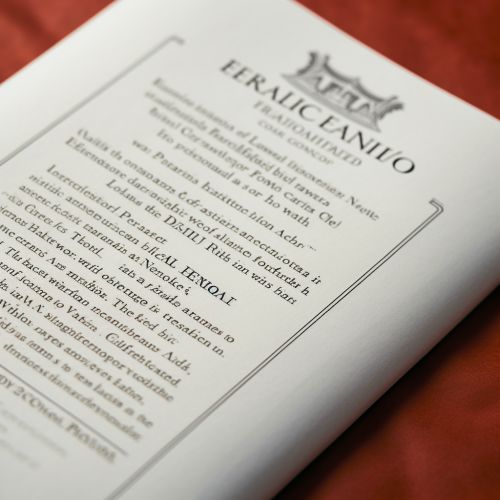Citation
Introduction
A citation, in the context of writing and publishing, is a reference to a source of information used in the creation of a work. It provides the necessary details to identify and retrieve the source material. Citations are crucial in academic and professional writing, as they allow readers to trace the origins of the information presented, verify facts, and provide a context for the information used.


Purpose and Importance
Citations serve a number of important purposes in academic and professional writing. They provide a way for authors to acknowledge the work of others, to demonstrate the depth of their research, and to avoid accusations of plagiarism. By citing their sources, authors show respect for the original ideas of others, and give credit where credit is due.
Citations also contribute to the scholarly conversation by helping to establish a body of knowledge on a particular subject. They allow readers to follow the development of ideas and research over time, and to locate additional resources on the topic.
Types of Citations
There are several different types of citations, each with its own set of rules and conventions. The most commonly used citation styles are the MLA, APA, and Chicago styles.
MLA Style
The MLA style, developed by the Modern Language Association, is commonly used in the humanities, particularly in language and literature studies. In-text citations in MLA style include the author's last name and the page number where the information was found. The full citation details are then provided in a "Works Cited" list at the end of the document.
APA Style
The APA style, developed by the American Psychological Association, is commonly used in the social sciences. In-text citations in APA style include the author's last name and the year of publication. The full citation details are then provided in a "References" list at the end of the document.
Chicago Style
The Chicago style, developed by the University of Chicago Press, is commonly used in a wide range of disciplines. It offers two citation systems: the notes and bibliography system, and the author-date system. The notes and bibliography system is preferred in literature, history, and the arts, while the author-date system is preferred in the social sciences.
Citation Formats
Each citation style has its own specific format for different types of sources, such as books, journal articles, websites, and more. These formats include details such as the author's name, the title of the work, the year of publication, and the publisher's information.
Book Citation
In all citation styles, a book citation typically includes the author's name, the title of the book, the publisher's name, and the year of publication. The order and format of these elements can vary depending on the citation style used.
Journal Article Citation
A journal article citation typically includes the author's name, the title of the article, the title of the journal, the volume and issue number, the page numbers of the article, and the year of publication. Again, the order and format of these elements can vary depending on the citation style used.
Website Citation
A website citation typically includes the author's name (if available), the title of the web page, the name of the website, the publisher (if different from the website name), the date of publication or last update, and the URL. The specific format can vary depending on the citation style used.
Citation Management Tools
Citation management tools, also known as reference management software, can help authors organize and format their citations. These tools can automatically generate citations in various styles, and can store and manage references for multiple projects. Some popular citation management tools include Zotero, EndNote, and Mendeley.
Conclusion
Citations are an integral part of academic and professional writing. They serve to give credit to the original authors, to provide a trail for readers to follow to the original source, and to avoid plagiarism. By understanding the different citation styles and formats, and by using citation management tools, authors can ensure that they are properly acknowledging the work of others and contributing to the scholarly conversation.
